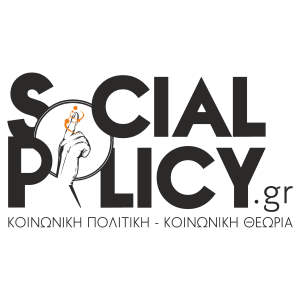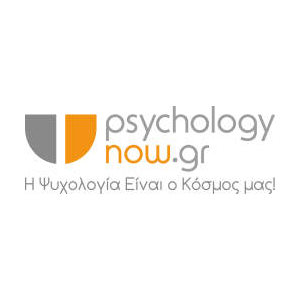Βραβείο 2021

Βραβείο 2022

Στρατηγικός συνεργάτης

Υποστηρικτές Επικοινωνίας


Abstract
ESCAP firmly believes that there is an urgent need to apply widely endorsed clinical, scientific, and ethical standards to the care of children and adolescents with gender dysphoria. It is important to base decisions for possible medical transitions on a rigorous assessment of individual needs and their capacity to consent regarding the serious long-term consequences of these treatments. Long-term follow-up studies are urgently needed to better understand both the natural course of gender dysphoria in the absence of medical treatment and the consequences of medical transition. A clinical research framework with patient and public involvement should be established and promoted at the European level to facilitate relevant research. The standards of evidence-based medicine must ensure the best and safest possible care for each individual in this highly vulnerable group of children and adolescents. As such, ESCAP calls for healthcare providers not to promote experimental and unnecessarily invasive treatments with unproven psycho social effects and, therefore, to adhere to the "primum-nil nocere" (first, do no harm) principle. Finally, ESCAP insists that respect for all kinds of different views and attitudes is an essential part of an ongoing open professional debate that we wish to stimulate.
Citation: Drobnič Radobuljac, M., Grošelj, U., Kaltiala, R., ESCAP Policy Division, ESCAP Board, Vermeiren, R., Crommen, S., Kotsis, K., Danese, A., Hoekstra, P. J., & Fegert, J. M. (2024). ESCAP statement on the care for children and adolescents with gender dysphoria: an urgent need for safeguarding clinical, scientific, and ethical standards. European child & adolescent psychiatry, 10.1007/s00787-024-02440-8. Advance online publication. https://doi.org/10.1007/s00787-024-02440-8
Open access article: https://www.sciencedirect.com/science/article/pii/S0001691823001142
Abstract
The current “autism spectrum” DSM 5 diagnostic criteria and autism standardized diagnostic instruments promote considerable heterogeneity or clinical indecision and may be detrimental to the advancement of fundamental research on autism mechanisms. To increase clinical specificity and reorient research towards core autistic presentations, we propose new diagnostic criteria for prototypical autism during the age of 2- to 5-years. We include autism within other non-dominant, familiarly aggregated phenomena sharing asymmetrical developmental bifurcations, such as twin pregnancy, left handedness, and breech presentation/delivery. Following this model, nature, trajectory, and positive/negative signs structure of autism would result from the polarized problem of whether or not language and information is processed in a socially biased manner. Prototypical autism would follow a canonical developmental trajectory by which a gradual decline in social bias in the processing of incoming information, overtly beginning at the end of the first year, bifurcates into a prototypical autistic presentation in the second half of the second year of life. This bifurcation event is followed by a plateau, in which these atypicalities show maximal stringency and distinctiveness, and then ultimately, in most cases, by partial normalization. During the plateau period, the orientation towards, and processing of, information is considerably modified, with an absence of bias for social information, contrasting with a high level of interest in complex, unbiased information, independently of its social or non-social nature. Integrating autism into asymmetrical developmental bifurcations would explain the absence of deleterious neurological and genetic markers and the presence of familial transmission in canonical autistic presentations.
Citation: Laurent Mottron, David Gagnon, Prototypical autism: New diagnostic criteria and
asymmetrical bifurcation model, Acta Psychologica, Volume 237, 2023, 103938, ISSN 0001-
6918, https://doi.org/10.1016/j.actpsy.2023.103938.
Open access article: https://onlinelibrary.wiley.com/doi/abs/10.1002/aur.2610
Abstract
Autism diagnosis in adulthood has become increasingly common due to a range of factors including changes in awareness, diagnostic criteria, and professional practices. Past research identified a range of demographic and autism-related factors associated with autism diagnosis age in children. However, it is unclear whether these apply to autistic adults. This study aimed to examine predictors of autism diagnosis age in adults while controlling for current age and autistic traits. We used a cross-sectional sample of 657 adults aged 15–80 from three self and carer-report studies: the Australian Longitudinal Study of Autism in Adulthood (ALSAA), Study of Australian School-Leavers with Autism (SASLA) and Pathways, Predictors and Impact of Receiving an Autism Spectrum Diagnosis in Adulthood (Pathways). Using hierarchical multiplicative heteroscedastic regression, we found that older current age and higher self-reported autistic traits predicted older diagnosis age, and that female gender, lack of intellectual disability, language other than English, family history of autism, lifetime depression, and no obsessive–compulsive disorder predicted older diagnosis age beyond current age and autistic traits. The paradoxical relationship between high autistic traits and older diagnosis age requires further investigation. Based on these findings, we recommended strategies to improve autism recognition in women and people from non-English-speaking backgrounds. Future studies could extend the findings by examining the effects of childhood and adulthood socioeconomic status on adult diagnosis age.
Lay Summary
We studied the relationship between age at autism diagnosis and other characteristics in adults. We found that both older current age and higher autistic traits, female gender, language other than English, family history of autism, and history of depression were related to older age at diagnosis, while intellectual disability and history of obsessive–compulsive disorder were related to younger age at diagnosis. Our findings suggest more work is needed to help recognize autism in women and people from non-English-speaking backgrounds.
Citation: Yunhe Huang, Samuel R. C. Arnold, Kitty-Rose Foley, Lauren P. Lawson, Amanda L. Richdale, Julian N. Trollor (2021). Factors associated with age at autism diagnosis in a community sample of Australian adults. Autism Research, 14:12, 2677-2687.
Open access article: ( https://pubmed.ncbi.nlm.nih.gov/36053924/ )
Abstract
A large body of research showed that autistic people have intact emotional (affective) empathy alongside reduced cognitive empathy. However, there are mixed findings and these call for a more subtle understanding of empathy in autism. Empathic disequilibrium refers to the imbalance between emotional and cognitive empathy and is associated with a higher number of autistic traits in the typical population. Here we examined whether empathic disequilibrium predicts both the number of autistic traits and autism diagnosis. In a large sample of autistic (N = 1905) and typical individuals (N = 3009), we examined empathic disequilibrium and empathy as predictors of autistic traits and autism diagnosis, using a polynomial regression with response surface analysis. Empathy and autistic traits were measured using validated self‐report questionnaires. Both empathic disequilibrium and empathy predicted linearly and non‐linearly autism diagnosis and autistic traits. Specifically, a tendency towards higher emotional than cognitive empathy (empathic disequilibrium towards emotional empathy) predicted both autism diagnosis and the social domain of autistic traits, while higher cognitive than emotional empathy was associated with the non‐social domain of autism. Empathic disequilibrium was also more prominent in autistic females. This study provides evidence that beyond empathy as was measured thus far, empathic disequilibrium offers a novel analytical approach for examining the role of empathy. Empathic disequilibrium allows for a more nuanced understanding of the links between empathy and autism.
Lay summary
Many autistic individuals report feelings of excessive empathy, yet their experience is not reflected by most of the current literature, typically suggesting that autism is characterized by intact emotional and reduced cognitive empathy. To fill this gap, we looked at both ends of the imbalance between these components, termed empathic disequilibrium. We show that, like empathy, empathic disequilibrium is related to autism diagnosis and traits, and thus may provide a more nuanced understanding of empathy and its link with autism.
Citation: Shalev I., Warrier V., Greenberg DM., Smith P., Allison C., Baron-Cohen S., Eran A., Uzefovsky F., (2022). Reexamining empathy in autism: Empathic disequilibrium as a novel predictor of autism diagnosis and autistic traits. Autism Res, 15(10):1917-1928. doi: 10.1002/aur.2794.
Open access article: (https://journals.sagepub.com/doi/full/10.1177/13623613221077721 )
Abstract
In this systematic review, we examined quantitative, qualitative and mixed methods studies on loneliness in autistic adults. A total of 1460 articles were identified, and 34 of these met inclusion criteria. Results demonstrated that (1) there is a paucity of qualitative data providing first-hand descriptions of loneliness from autistic adults; (2) few empirical studies have used reliable/valid measures of loneliness developed specifically for autistic adults, and in just one study was a measure of loneliness developed for, and validated in, autistic adults; (3) the collective dimension of loneliness (i.e. belonging in society) has been described by autistic adults, yet has not been investigated as frequently as the intimate (i.e. romantic relationships) or relational (i.e. friend/family relationships) dimensions of loneliness; (4) the factors associated with increased loneliness in autistic adults include autistic characteristics, anxiety, depression and suicidal ideation, negative experiences and learned helplessness, a lack of autism understanding and acceptance, sensory avoidance, camouflaging and unemployment; and (5) the factors associated with decreased loneliness in autistic adults include having relationships, participation in social skill interventions and/or experiencing fewer difficulties with social skills, positive views and acceptance of oneself, being female and time spent engaging in activities (e.g. online gaming). Directions for future research are considered.
Lay abstract
Recently, researchers have been interested in how autistic people experience loneliness. Yet, most of this research has focused on loneliness in autistic children and young people. We present the results of a systematic review on loneliness in autistic adults. A systematic review is a rigorous way of searching for all existing research on a topic and summarizing the findings about specific questions. We searched for all research published on this topic until 9 April 2021. We found 34 articles that investigated loneliness in autistic adults. This research showed that (1) there is fairly little research that has involved directly asking autistic adults about their first-hand experiences of loneliness (e.g. what loneliness feels like for them); (2) few research studies have used loneliness questionnaires specifically developed for autistic adults (this was attempted in just one research study); (3) collective loneliness (i.e. loneliness associated with how much an autistic person feels they ‘fit in’ to society) seems important to autistic adults but has not been investigated as commonly as other aspects of loneliness (e.g. loneliness associated with romantic relationships or friendships); (4) things that might increase loneliness in autistic adults include anxiety and depression, and a lack of autism understanding and acceptance, for example; and (5) things that might reduce loneliness in autistic adults include having relationships and self-acceptance, for example. In our article, we discuss the kinds of future research on loneliness in autistic adults that might be useful.
Citation: Umagami K, Remington A, Lloyd-Evans B, Davies J, Crane L. Loneliness in autistic adults: A systematic review. Autism. 2022 Nov;26(8):2117-2135. doi: 10.1177/13623613221077721. Epub 2022 Mar 8. PMID: 35257592; PMCID: PMC9597154.